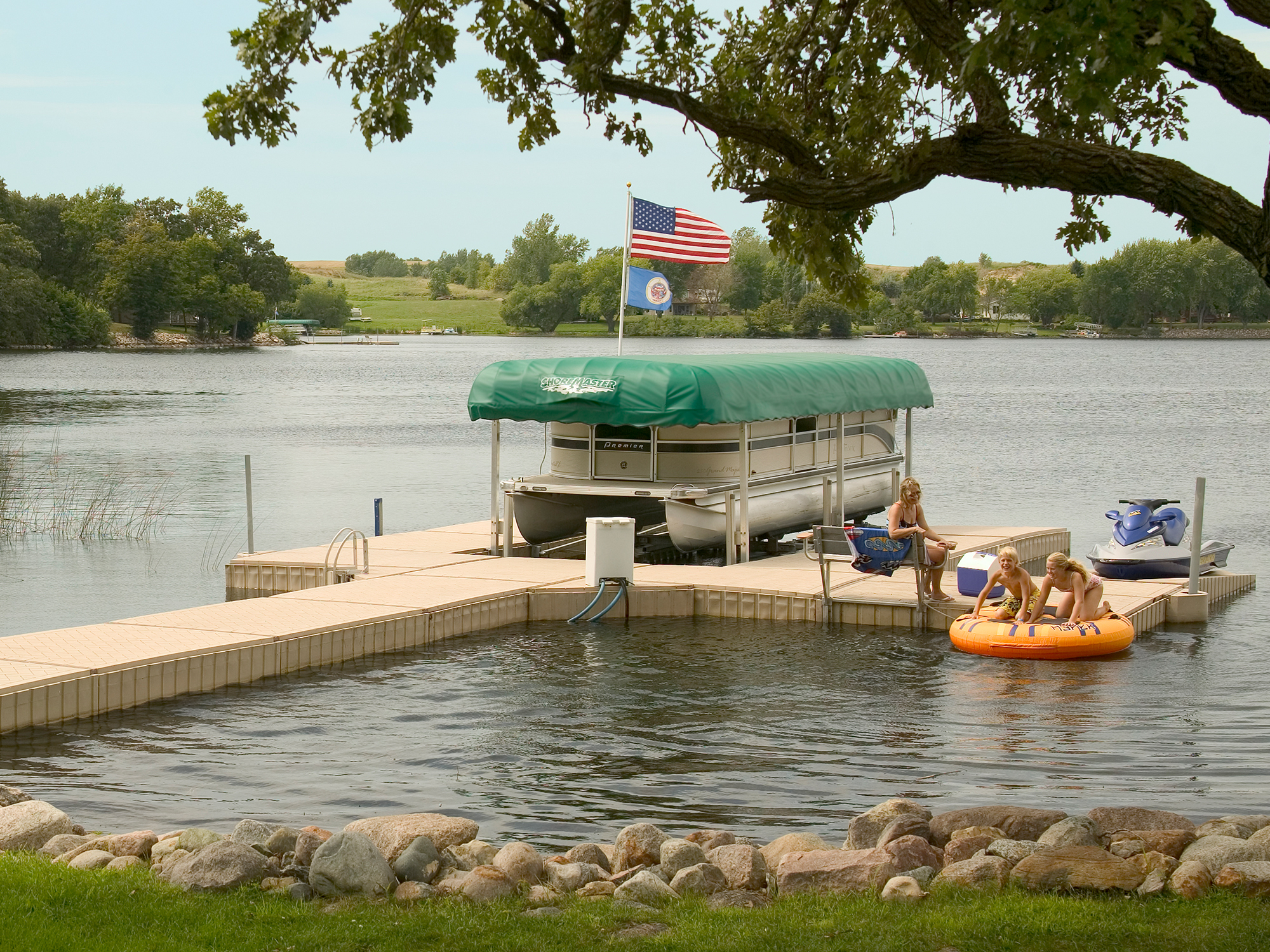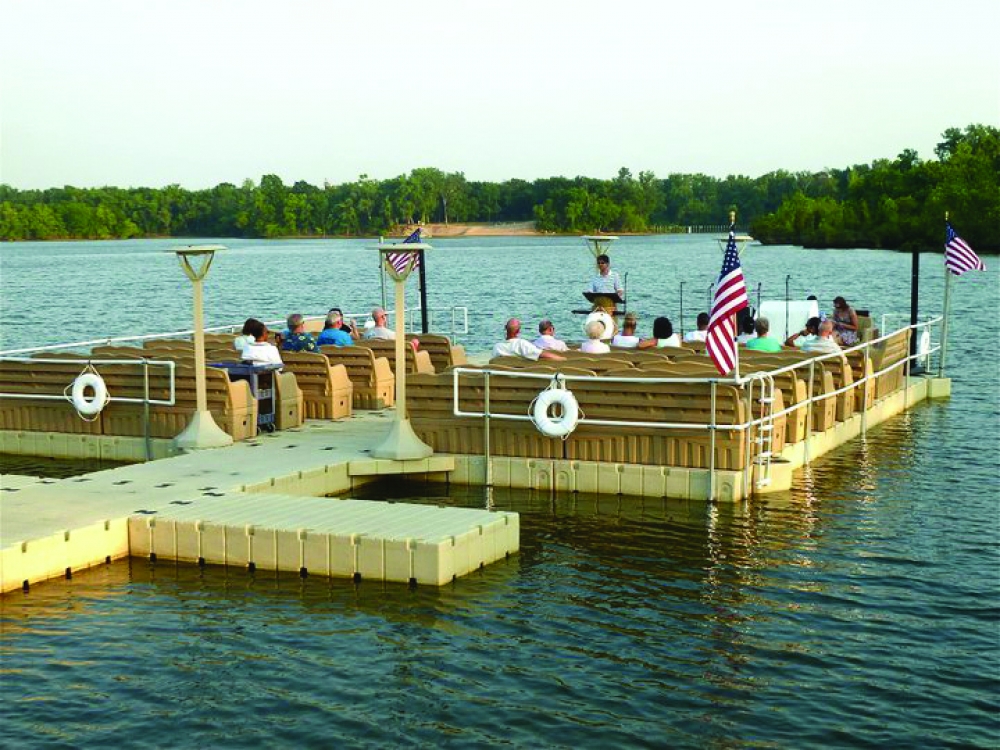Create the Perfect Docking Option With Floating Docks
Floating docks present a flexible service for a range of maritime needs, adapting perfectly to rising and fall water levels and varied vessel kinds. Their modular nature allows for quick installment and moving, yet the option of suitable materials and layout features is essential for ensuring both functionality and aesthetic charm. As we check out the essential elements that add to the effectiveness of floating docks, numerous crucial aspects pertaining to security and upkeep will emerge, elevating questions regarding how to maximize your docking experience. The succeeding conversation will illuminate these vital factors to consider.

Benefits of Floating Docks
Floating docks offer various benefits that make them a perfect choice for various maritime applications. Among the key benefits is their flexibility to changing water degrees. Unlike fixed docks, floating docks fluctuate with the trend, making sure consistent accessibility for vessels. This function is particularly essential in areas susceptible to significant tidal changes or seasonal water level changes.
Furthermore, floating docks are normally easier and quicker to set up compared to traditional fixed frameworks. Their modular layout enables simple setting up and disassembly, promoting maintenance and relocation when needed. This versatility is particularly beneficial for temporary applications or in atmospheres where conditions might alter.
Floating docks also often tend to be more eco friendly, as they lessen disturbance to the seabed and surrounding aquatic environments. Their buoyant nature decreases the threat of damage to aquatic life, promoting a much healthier environment. Furthermore, these docks can be personalized to accommodate different vessel dimensions, ensuring that they satisfy details functional requirements - dock company.
Inevitably, the combination of adaptability, convenience of setup, and ecological factors to consider makes floating docks a very reliable service for a variety of maritime requirements.
Picking the Right Products
Picking the suitable materials for floating docks is essential to ensure security, sturdiness, and durability. The choice of materials straight influences the dock's performance in numerous ecological problems, consisting of exposure to water, sunlight, and potential wear from aquatic web traffic.
Common materials made use of for floating docks consist of aluminum, wood, and high-density polyethylene (HDPE) Light weight aluminum is light-weight, corrosion-resistant, and calls for very little maintenance, making it an excellent choice for durability. Its initial expense can be higher compared to various other materials.
Wood, while cosmetically attractive and offering a traditional appearance, can be at risk to rot and insect damage if not properly treated. Utilizing pressure-treated timber or naturally sturdy varieties like cedar or redwood can reduce these issues.
HDPE is a prominent selection as a result of its resistance to UV rays and chemicals, along with being eco-friendly. floating dock builder. It is offered and lightweight in different shades, allowing for personalization
Eventually, the right product choice will depend on specific needs, including budget plan, desired aesthetics, and ecological factors to consider. Cautious examination of these aspects will cause a resistant and successful floating dock service.
Layout Factors To Consider for Security
When making floating docks, guaranteeing stability is a basic facet that can considerably influence their functionality and safety. Security in floating dock style is influenced by numerous factors, including buoyancy, weight circulation, and the arrangement of elements. An ideal buoyancy system must use materials that give enough lift while minimizing weight. This balance makes sure that the dock continues to be above water, even under differing tons.
Weight circulation is essential; equally distributing tons throughout the dock protects against turning and enhances security. This can be accomplished via critical positioning of docking tools, such as cleats and fenders, as image source well as correct spacing of floats. Additionally, the dimensions of the dock must be attentively planned. Larger styles can offer boosted stability, especially in harsh water conditions, while longer docks may need added supports to avoid drooping.
An additional essential consideration is the environmental influence, consisting of wave activity and wind. Integrating functions such as sidewalls or skirting can assist minimize the helpful site impacts of environmental forces, maintaining stability in adverse problems. Eventually, a combination of thoughtful layout, material choice, and understanding of ecological elements will certainly produce a floating dock that fulfills both stability and safety and security demands.
Installment Tips and Strategies

Following, secure the essential permits and stick to regional laws, which might dictate setup techniques and ecological factors to consider. If required, engage a qualified specialist experienced in floating dock installations. Usage premium products designed for marine environments to improve sturdiness and durability.
When placing the dock, straighten it identical to the coastline to help with very easy accessibility. Make sure that the anchoring system is durable, employing concrete blocks or helical anchors to stabilize the dock against wind and wave action. It's critical to make up seasonal water level best site variations, including potential ice activity in colder climates.
Throughout the setup, ascertain the dock's floatation and security prior to finalizing the anchoring. Routinely check the setup for any indicators of wear or damage. By complying with these methods and tips, you can achieve a safe, functional, and visually pleasing floating dock installation that fulfills your demands.
Maintenance and Treatment Guidelines
Caring and keeping for floating docks is essential to extending their life-span and making certain secure usage. Normal inspections must be performed to identify any indications of wear, damage, or marine growth. Seek fractures, loosened fittings, or blemished areas on the dock's surface area, as these issues can compromise architectural honesty.
Cleaning is essential. Utilize a stress washing machine to get rid of algae, barnacles, and debris, which can gather gradually. For stubborn growth, consider eco pleasant cleaner that won't hurt marine life.
In addition, check the mooring lines and supports regularly to ensure they are complimentary and safe from deterioration. Change any frayed or damaged lines without delay to keep stability.
Throughout extreme climate, such as storms or freezing conditions, take precautionary procedures. Secure the dock with additional mooring lines and, if feasible, eliminate any removable elements to protect against damages.
Verdict
In final thought, the application of floating docks offers a flexible and effective docking solution suitable for numerous maritime applications. With appropriate installation and normal upkeep, floating docks can supply dependable and reliable docking experiences for a large range of vessels.
As we check out the necessary components that add to the efficiency of floating docks, numerous crucial variables concerning stability and upkeep will emerge, increasing concerns regarding just how to maximize your docking experience. Unlike repaired docks, floating docks surge and fall with the trend, guaranteeing constant availability for vessels.When creating floating docks, guaranteeing security is a basic facet that can significantly influence their capability and safety. Stability in floating dock layout is affected by various elements, including buoyancy, weight distribution, and the setup of components. Eventually, a combination of thoughtful style, material option, and understanding of environmental factors will certainly produce a drifting dock that satisfies both security and safety and security requirements.
Comments on “Floating Docks: The Smart Selection for Modern Waterside Living and Recreation”